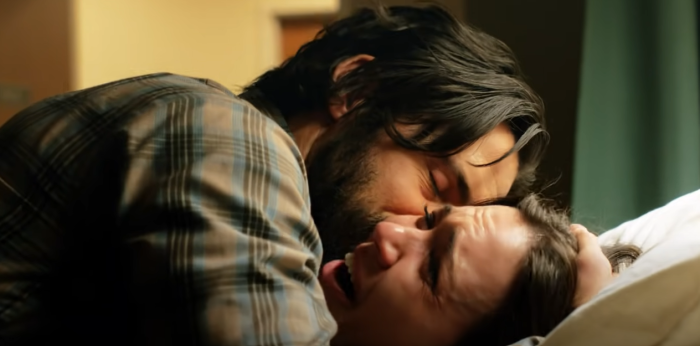For the past several years, Tuesday from 9 to 10 p.m. has become my sacrosanct deep dive into relationships, addiction, death, mental health challenges, do-overs, forgiveness, adoption, parenting, career choices, race, war, PTSD and love played out, courtesy of the immediate and extended Pearson family.
People in my life know not to call me during that hour unless it is an emergency. Blessedly, it has never happened.
In case you have been living under a rock, you know that the NBC hit “This Is Us” is a wildly popular show that is now nearing the end of its six-season run.
As much as fans protest, it was always meant to be time-limited. The network didn’t cancel it. I missed the first two seasons and later binge-watched them in a two-week period in order to catch up.
My friend at whose house I sprawled on the couch, tissues in hand, marveled at how I was able to predict dialogue and plot points. I reminded her that as a therapist, I had special insights into family drama. I am certain that they have consultants in the writers’ room who are in the field.
In the first season, Jack and Rebecca Pearson are about to give birth to triplets they plan to name Kevin, Kate, and Kyle.
Sadly, they lose Kyle during delivery. Simultaneously, another boy is abandoned at a firehouse by his drug-addicted father after his mother dies (or so we are led to believe). A firefighter takes the infant to the hospital where Jack sees him lying in the nursery next to his children and gets an insight that they should adopt this little one. Distraught and grieving, Rebecca reluctantly agrees to his plan, and they add Randall to the family. Enter “the big three” as the kids are called.
Throughout the show, which is a stretchy, time-bending adventure (moving from the 1960s to the present-day slings-shotting back and forth), the viewer sees the development of the characters and the pivotal event that molds their adulthood.
Pretty early on, the show reveals that Jack dies in a tragic manner when the triplets are 17, but no specifics are offered. It is kind of like the “who shot J.R.?” mystery in the show Dallas. Lots of guesses abounded as Jack is shown struggling with alcoholism, as did his abusive father.
Jack was determined not to emulate his dad’s parenting style. That he did in glorious form. At every turn, he was present, patient, loving, wise, and witty. He did, however, overindulge their whims—often to the frustration of Rebecca who sometimes felt like the bad cop to his good cop persona. It didn’t seem like a decision to undermine her but to overcompensate for his childhood.
Each of the children has their own mental health/addiction issues. Kate has an eating disorder that began when Jack was still alive (since food was her love language) and exacerbated after Jack had died and she left an abusive relationship. Kevin has a substance addiction that started when he injured his leg in his work as an actor; the same leg he injured when his high school football stardom was cut short. Randall struggles with anxiety, perfectionism, and “savior complex” and wants to make everyone happy.
All throughout, Rebecca is a steadfast support who is trying to make her way in the world without the love of her life by her side. She does her best to raise three children with diverse needs as a single parent. Each of them marries, and by the end of the show, two have divorced and remarried as is shown in the flash-forward scenes, and one has sustained a long-term union. Each of them becomes parents, some by birth, two by adoption.
The show reflects real life. One of my favorite episodes is when Tess, the daughter of Randall and Beth, comes out as a Lesbian and the beautiful way the family traversed her discovery of who she was. Another one is when Randall learns that his birth mother was resuscitated after a drug overdose, so he goes on a search to discover her history, which is part of his birth story, too.
There are numerous Facebook pages dedicated to the show, and I enjoy visiting them to read the fantastical ideas of the viewers on how the storyline should unfold as well as why certain characters were introduced.
Some of these characters would have no direct interaction with the Pearsons; however, they might do something that would have a direct impact on them. For example, in one of the episodes, Nasir Ahmed, the Indian-American electrical engineer, computer scientist, and Professor Emeritus at the University of New Mexico who helped invent the Discrete Cosine Transform—the technology piece used for image sharing and online video-conferencing such as FaceTime, appeared on the show. In that episode, the family was shown staying in touch in the midst of the pandemic through that mode.
Most recently, the subject of PTSD for war veterans was broached.
What viewers know is that the family matriarch, Rebecca, is taking her leave because Alzheimer’s has taken a hold of her. We see at her bedside some but not all of the characters, which leaves viewers scratching their heads about the possible death of two of the main ones.
As much as I like predicting the words and actions of the characters, I have to remind myself that they are creations of the writers. They don’t have free will to go off-script. People say they hope Kevin ends up with one of the four women he was with or someone he has not yet met, and the reality is that he only ends up with whoever the writers and showrunners say he does.
We try to figure out the connections between the characters as the storyline meanders back and forth through time.
We express alliance with certain characters and dislike for others. Maybe they are based on our perception of ourselves or our history of relationships with people who are similar to the characters.
It seems to this career psychotherapist that “This Is Us” is a mirror for its viewers. So it really is Us.
That is the power of this show.
I know when it ends, there will be space in my heart for this family, as if I was a part of it.












Read 9 comments and reply